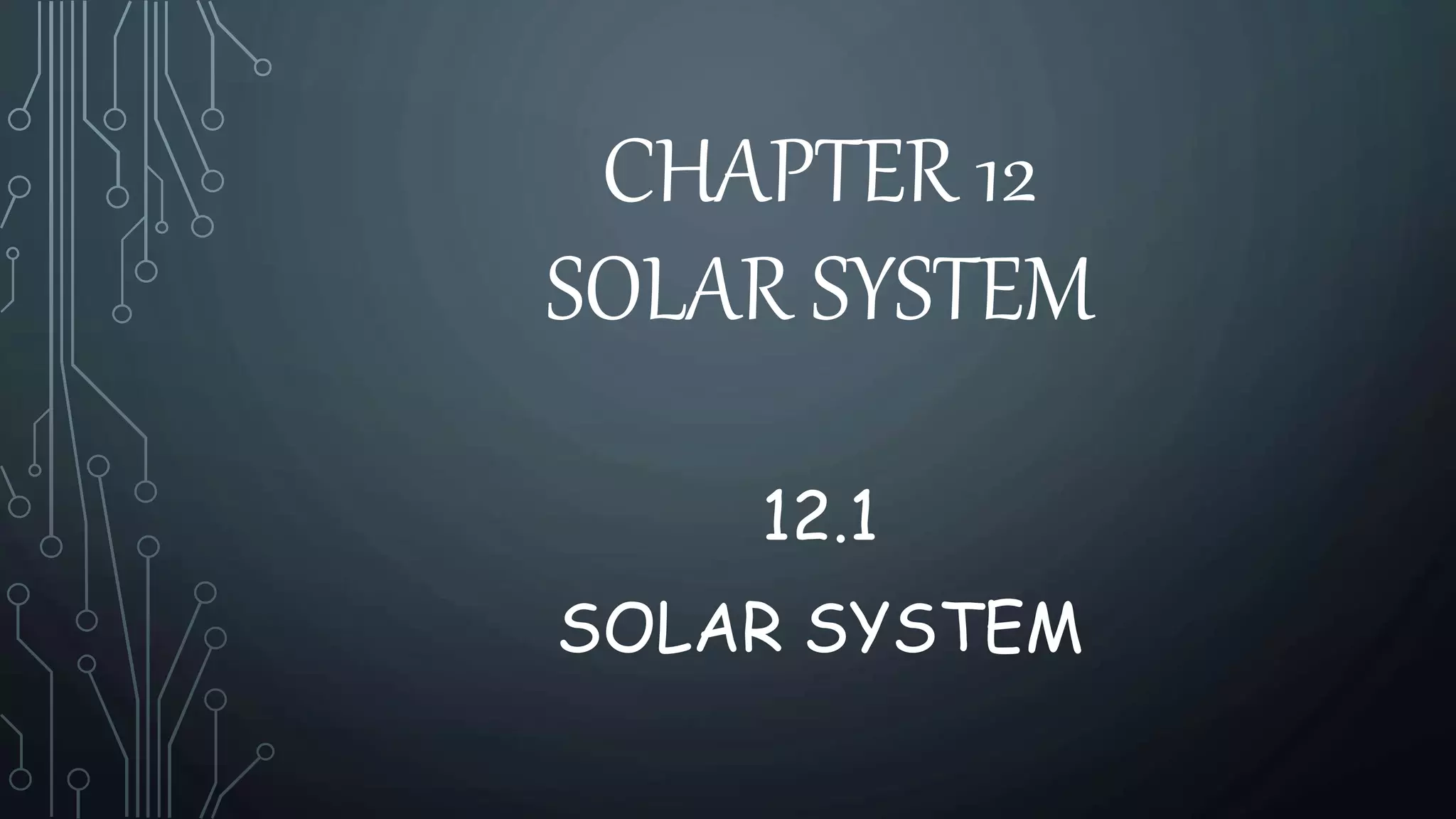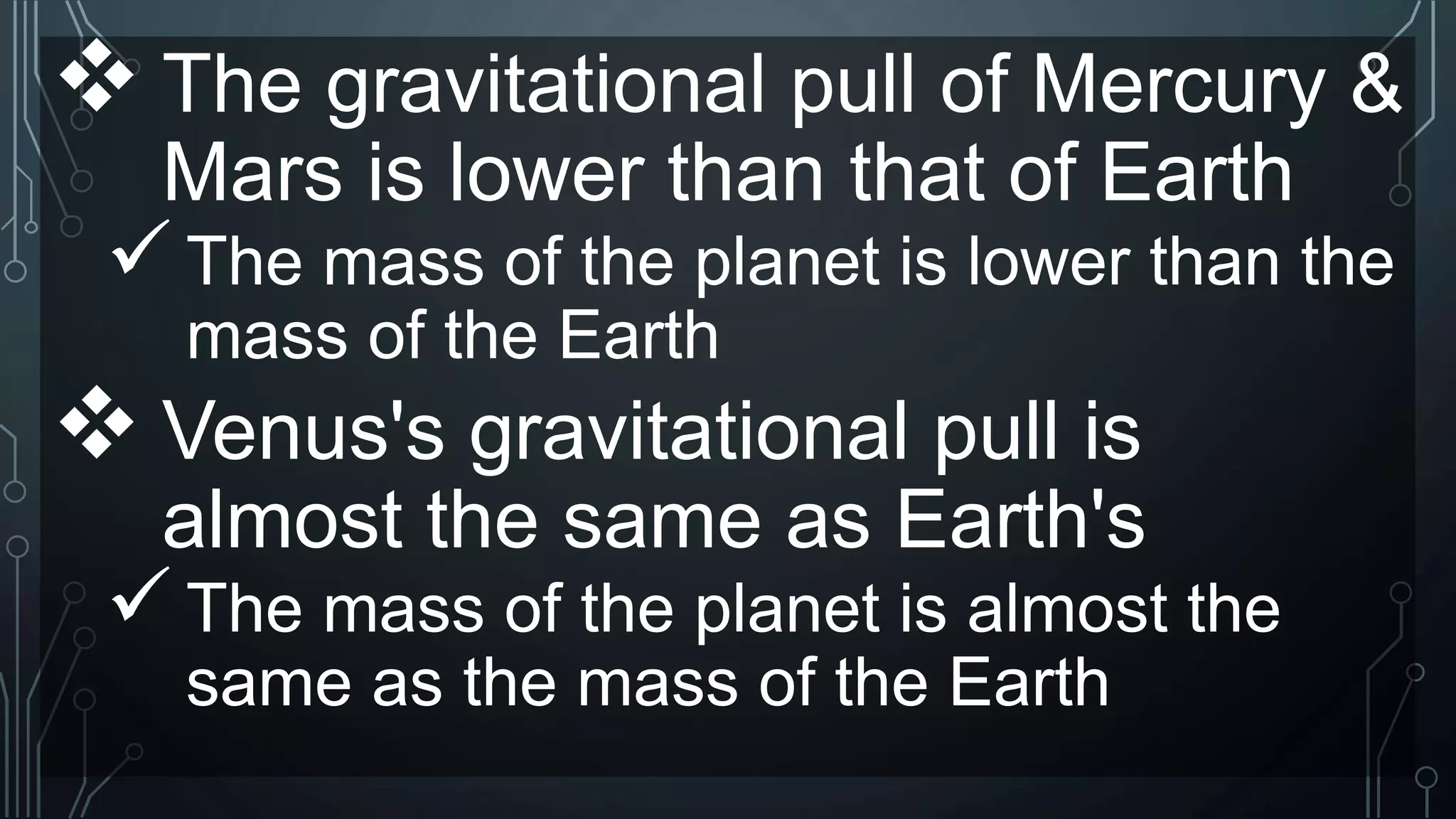The document summarizes key information about the solar system. It begins by comparing distances between planets using astronomical units and light years. Tables compare planet characteristics like size, composition and distances from the Sun. Relationships are discussed between temperature and proximity to the Sun, density and gravitational pull, and rotational speed and orbit time. Hypothetical situations consider effects of changes to Earth's rotation. Moons are described as orbiting bodies like Earth's Moon. The document concludes Earth is uniquely suited for life by having water, oxygen, temperature range, atmosphere and gravity.















































